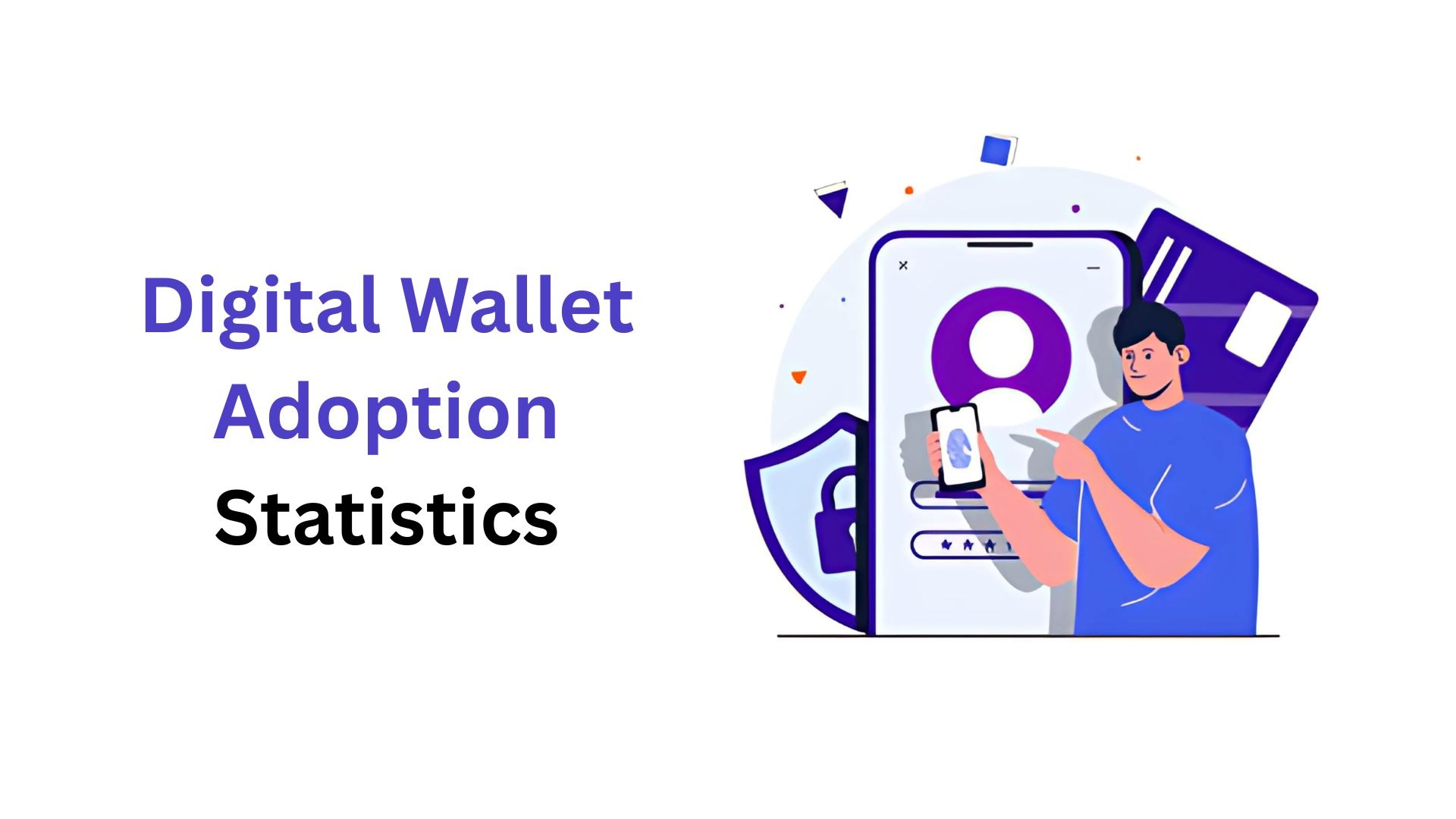Apple iPod Statistics By Revenue, Sales, Software, Trend, Insights and Facts (2025)
Updated · Oct 22, 2025
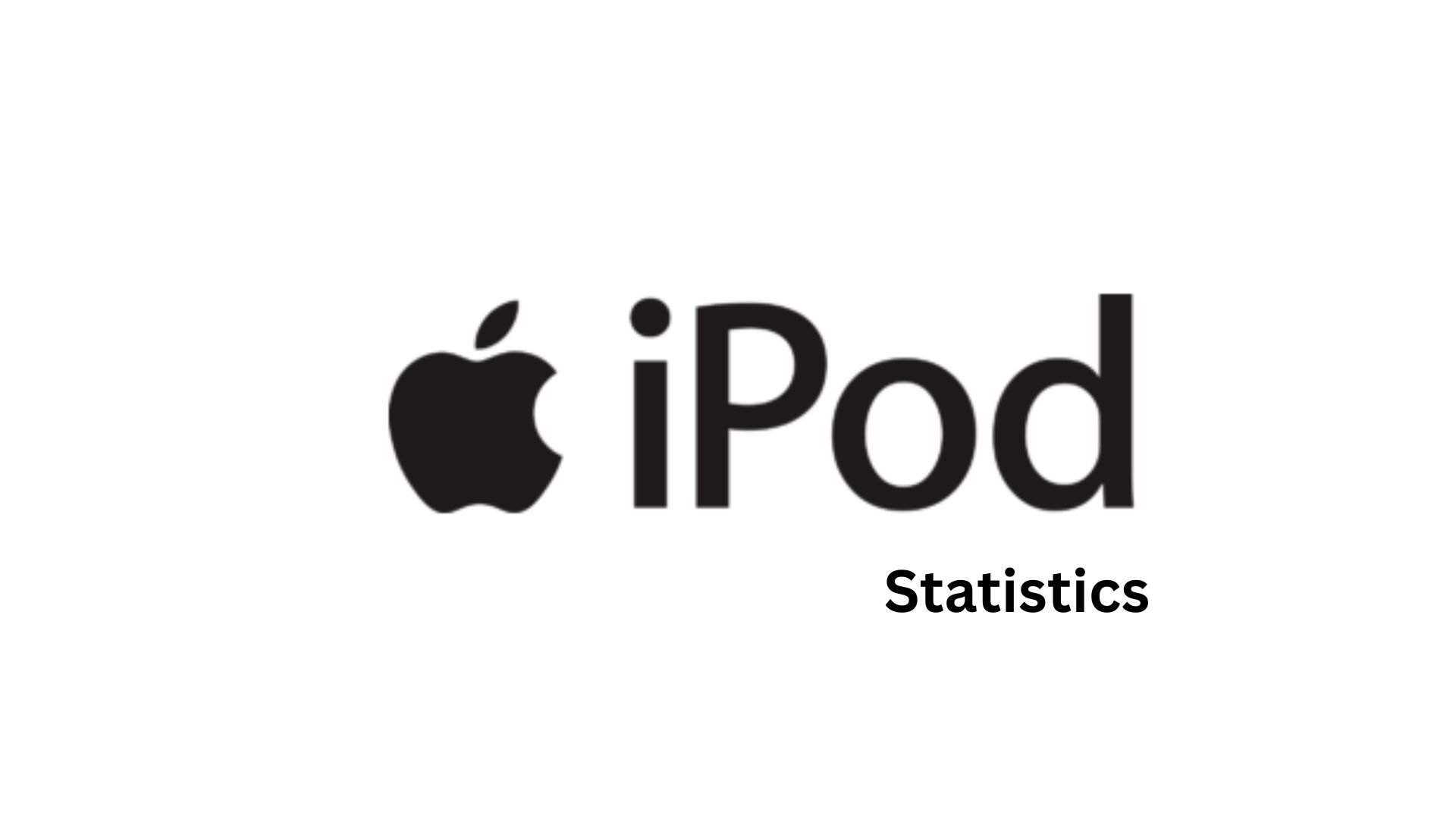
Table of Contents
Introduction
Apple iPod Statistics: The Apple iPod drastically changed the way people all over the world got to know music, and the transformation from a mere idea to a worldwide cultural trend was the very same thing that happened with the iPod. It was not only a device but also a sign of the things Apple stood for: namely, the freedom to express oneself, being creative, and being innovative. The iPod did not just change the way music was listened to; it also built the groundwork for Apple’s future ecosystem and inspired products like the iPhone and Apple Music.
The iPod has had a major impact on technology even today, as its influence can be heard in the generation of modern gadgets, which encourages us to consider how one revolutionary gadget has changed the rhythm of everyday life. This article will present the latest and trending Apple iPod statistics.
Editor’s Choice
- In 2001, the Apple iPod was a groundbreaking device, being able to store 1,000 songs and giving 10 hours of playback in a small size, thereby revolutionising portable music.
- The iPod has been discontinued, but its legacy lives on through Apple Music and contemporary devices like the iPhone, Apple Watch, iPad, Mac, and HomePod mini.
- Apple Music now provides more than 90 million tracks and 30,000 playlists, thus continuing the iPod’s influence in music listening.
- The Apple Vision Pro headset (2023) was viewed as another potential game-changing innovation like the iPhone’s 2007 debut, thus indicating the company’s commitment to continue reinterpreting personal tech through stealthy developments.
- iPod got to the highest interest in searches in December 2024 with a normalised volume of 100, which was holiday demand-driven, and then it declined to 58 in January 2025.
- Data from Amazon for the month of December 2024 indicated that it was the month with the highest sales of iPod tablets (1,549 units sold), and then a drastic post-holiday slump followed due to the problems with the display and battery, which were reported.
- The annual sales figures of the iPod reached their maximum at almost 55 million units during the year 2008, which alone constituted 40% of the total revenue of Apple; however, they gradually went down to 14.4 million in 2014 because of the dominance of smartphones and streaming services.
- The iPod was once the king of the portable media player market with a share of more than 70% and 90% in the hard-drive MP3 player segment, respectively, in the U.S.
- By the year 2013, the iPod Touch had sold more than 100 million units and was discontinued in 2019 when it was equipped with a storage capacity of up to 256 GB and 40 hours of audio playback.
- The market for used iPods experienced a revival in 2024, which was marked by an annual sales increase of 15.6% for refurbished and resale prices between US$50 and US$150.
General Facts
- The defeat of the Apple iPod, which was released in 2001, resulted in a transformation of music listening habits. This device made it possible for users to bring a huge library of songs along with them almost everywhere.
- Just two years later, Apple presented the iTunes Music Store, a revolutionary ecosystem integrating hardware and software for music modality and management.
- The period 2001-2019 saw about six major changes in Apple products from the Classic and Mini to Nano, Shuffle, and Touch.
- Among them, only the seventh-generation iPod Touch released in May 2019 is still available in limited supply.
- During its golden period, the iPod accounted for nearly 29% of the firm’s total revenue in the first quarter of 2009, but by the fourth quarter of 2014, the percent share was down to an insignificant 1% that amounted to only US$410 million in sales.
- By the beginning of 2015, merged iPod sales were merged into the category “Wearables, Home, and Accessories”, ceasing to report its revenue as a separate line item.
- The downward trend of iPod sales plus the impact on Apple’s revenue was minimal because Apple refreshed its product line, so to speak, aided by the introduction of newer and more sophisticated devices than before.
- Mainly, the rapid growth of smartphones, particularly the iPhone, accounted for the downfall of the iPod.
- The iPhone, which was launched in 2007, not only supported music but also had similar features to other powerful devices, thus cutting down the need for a separate player.
- According to the analysts, the iPhone “cannibalised” the iPod sales, as customers preferred an all-in-one sort of device.
- Consequently, the sales of single-function products for music listening dropped slowly but surely.
- Over the years, the iPhone’s share in Apple’s revenue increased remarkably—from approximately 25% in early 2009 to over 40% in the fourth quarter of 2020 and even more in some years, reaching 70%.
- At the same time, there was a change in people’s music consumption patterns. Streaming services like Apple Music, Spotify, etc., became the principal means to access songs, thus decreasing the necessity to store music on devices.
- This change in consumer preference, along with multifunctional smartphones, gradually pushed the iPod to extinction.
- However, the iPod still carries with it the memory of a digital music revolution, and it is also a major milestone in Apple’s, the world’s most powerful technology company, journey to that point.
The Legacy of the iPod And The Evolution of Apple’s Music Experience
- The iPod, twenty years after its launch, is still one of the most influential products of Apple.
- It was an innovation that made people able to listen to music in a different way, making it the first major digital music player.
- The iPod was launched in 2001 when the device amazed everyone with the ability to store 1,000 songs and was capable of 10 hours of playback with a battery that was very small and hence very portable.
- The freedom to carry and enjoy music anywhere, which was made possible by the iPod, has become part and parcel of Apple’s wider ecosystem now, which includes iPhone, Apple Watch, iPad, Mac, and HomePod mini.
- Greg Joswiak, the Senior Vice President of Worldwide Marketing at Apple, stated that the iPod was a big part of the music revolution, and it brought in new ways for people to listen and share music.
- Even though Apple has stopped making iPods, its essence still lives in the form of Apple Music and modern devices offering users access to an immense library of more than 90 million songs and over 30,000 curated playlists.
- The contemporary devices of Apple enable an all-inclusive and improved music experience. The iPhone continues to be the most versatile device for streaming Apple Music or a repository of complete music libraries.
- The Apple Watch and AirPods are a perfect match for wireless listening on the go, while the iPad and the Mac produce powerful sound and provide versatility.
- The combination of these gadgets makes the iPod’s original aim to become a personal, portable, and easy-to-relish source of music; thus, this mission still survives, but in a new and even smarter way.
Apple Revenue By Operating Segment
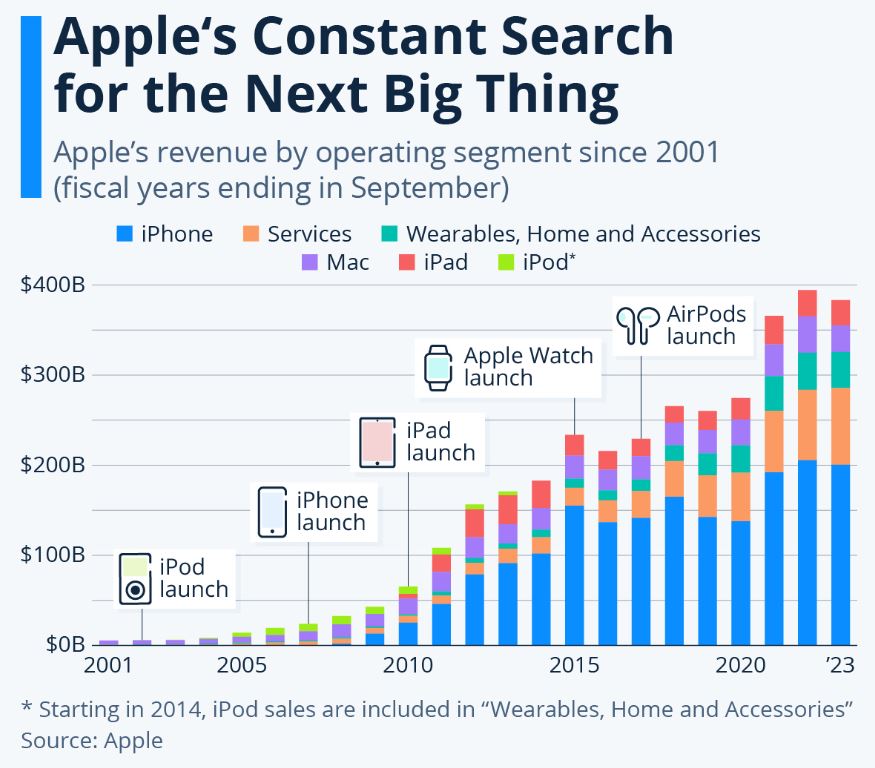
(Source: statista.com)
- The unveiling of Apple’s mixed reality headset, Apple Vision Pro, at WWDC in June 2023 was one of the reminders of Steve Jobs presenting the first iPhone back in 2007.
- While the Vision Pro announcement was pre-recorded and the iPhone debut lacked the live audience excitement, it still signified the arrival of a brilliant device with a completely different “spatial computing” interface.
- Tim Cook talked about it as the next significant step in technology — just as the Mac defined the personal computer and the iPhone defined mobile computing.
- The first impressions of the Vision Pro were mostly flattering, and the initial users of the device were stunned by its potential.
- However, a lot of people were also unsure about its primary function — the so-called “killer app” that would make it indispensable.
- This uncertainty is reminiscent of the early days of the Apple Watch, which had to find its place as a health and fitness device rather than just a wrist version of the iPhone.
- The iPhone was not so different from the Apple Watch in the beginning, as it too had very few features.
- Over the years, it has grown into Apple’s biggest success, continually generating more than US$200 billion in annual revenue and turning the company into a US$3-trillion giant.
- The Vision Pro’s exorbitant price of US$3,499 is likely to limit its early adoption.
- However, history tells us that the price reduction, combined with the developers’ investigation of new applications, might lead to the gadget eventually changing the way we interact with technology.
iPod Search Volume
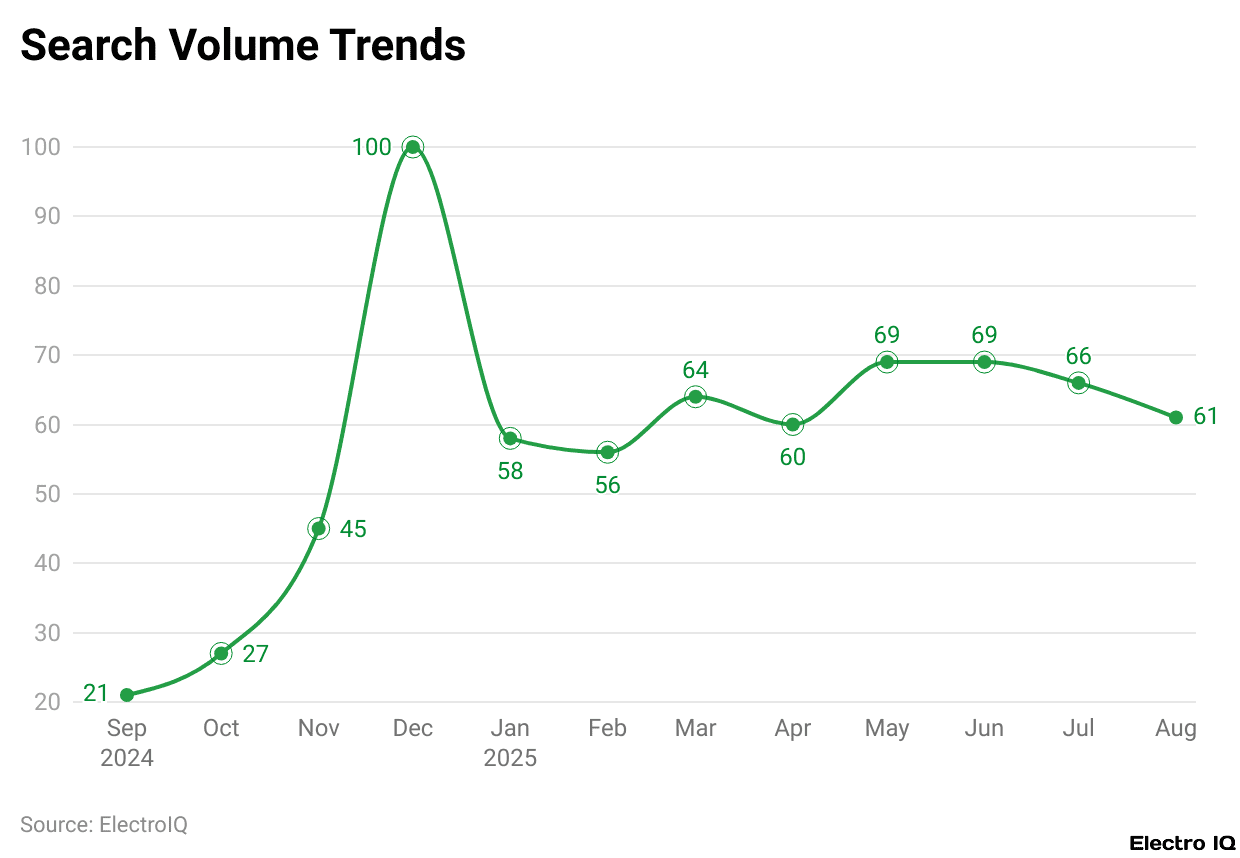
(Reference: accio.com)
- The search trends of the term “Apple iPod” indicated that December 2024 was the month of the highest normalised search volume of 100, which is a common peak in online interest during the holiday shopping season.
- Nevertheless, post-holiday interest plummeted dramatically in January 2025, going down to a score of 58.
- Interest remained comparatively low and did not exceed 70 throughout the month till April 2025, indicating the consumer’s attention had greatly reduced after Christmas.
- The month of May 2025 marked the start of a new cycle of search activity, which claimed 69 in June 2025, probably owing to the rekindled public interest generated by new product announcements, marketing campaigns, or discussions about the iPod that evoked nostalgia.
iPod Sales And Search Volume Trends
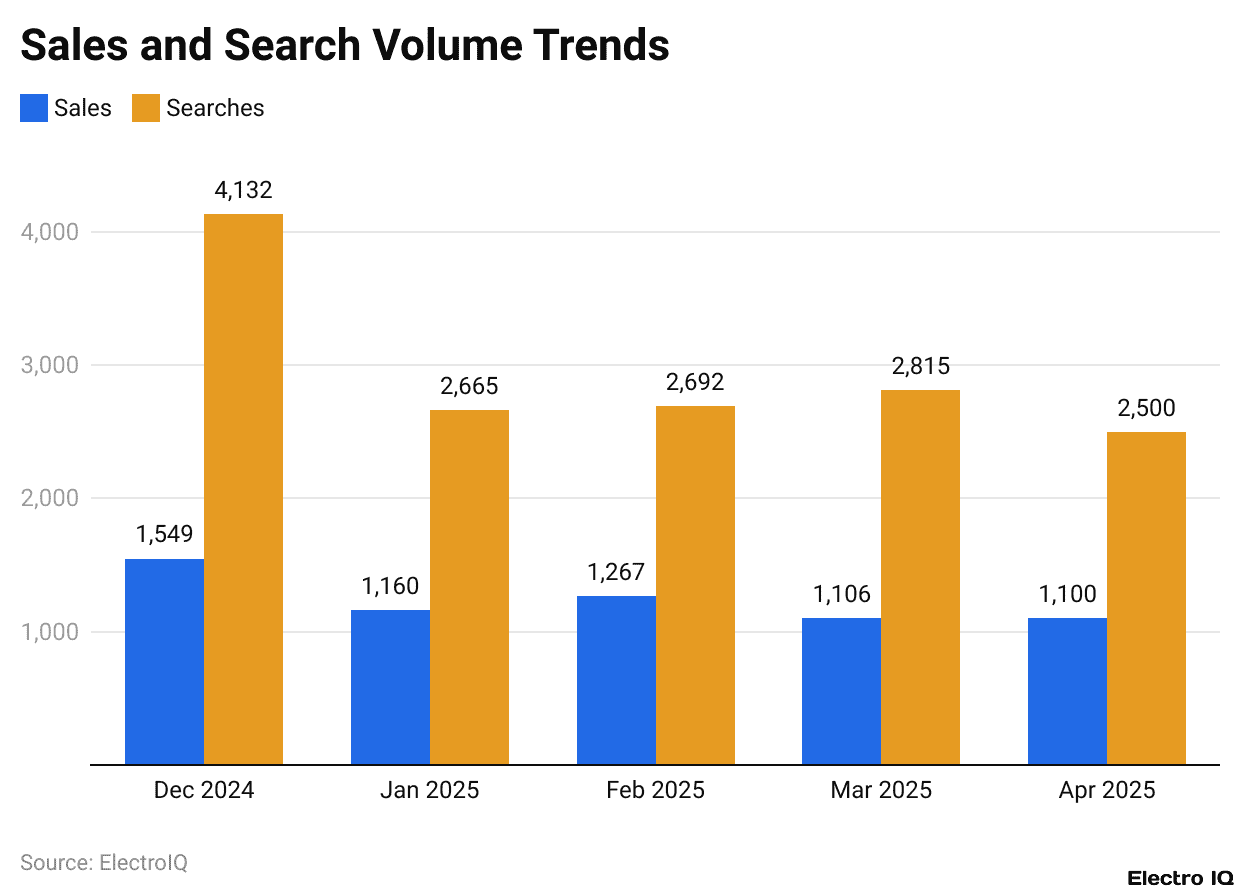
(Reference: accio.com)
- Analysis of Amazon’s data shows that the sales and search interest of Apple iPod tablets had been following a clear seasonal pattern.
- December 2024 was the month when both metrics were at their peak, with 1,549 units being sold and 4,132 searches, which means that there was a considerable holiday shopping demand.
- The figures, however, dropped remarkably in January 2025, with sales coming down to 1,160 units and searches being reduced to 2,665.
- In the month of April 2025, sales were stable at about 1,100 units per month while search activity remained somewhat unstable, oscillating between 2,500 and 3,000.
- The slump at the beginning of 2025 could be attributed to customer dissatisfaction as negative reviews frequently pointed out screen defects (19.4%) and battery malfunctions (15.8%), which might have discouraged new purchasers after the holiday influx.
Apple iPod Software Statistics
- Significantly, Apple’s iPod models advanced very much regarding functionality and multimedia capabilities.
- The 5th and 6th-generation iPod Classics, as well as the 3rd-gen iPod Nano, were capable of watching videos in MPEG-4 (H.264) and QuickTime formats, albeit with restrictions on size, resolution and data rate.
- The iPod Photo went one step further by enabling various image formats, including JPEG, BMP, GIF, TIFF, and PNG, thus having a significant combination of music and photo storage among the small devices.
- Also, according to Statista, iPod sales reached their highest point in 2008 at almost 55 million units but fell dramatically to 14.4 million by 2014, which shows the market’s shift towards smartphones and streaming services.
- In 2006, iPods accounted for 40% of Apple’s total revenue, but by 2014, that percentage had declined to just 1%, which shows how Apple’s revenue model changed from iPhone and newer technologies to the latter.
- At the peak of iPod sales in early 2007, they were the ones making about US$7.1 billion in sales quarterly, and these sales accounted for 48% of the total revenue that quarter.
- The iPod reigns supreme in the U.S. market with a share of over 90% of hard-drive MP3 players and 70% of all portable media players.
- In the year from January 2004 to January 2005, Apple’s market presence increased from 31% to 65%, and further to 74% by mid-2005.
- The iPod Touch that was released in September 2007was hailed as another blockbuster, accumulating over 100 million sales by the end of May 2013.
- Its last release came in May 2019 with 32 GB, 128 GB, and 256 GB storage options, A10 Fusion chip, and up to 40 hours of music play, which is a great deal of quality and longevity improvement over the past.
Resurgence In The Second-Hand Market of Apple iPod 2024
- The iPod has managed to surprise the second-hand market with a nostalgic and collector’s value, which is the main reason for the revival of the discontinued gadget.
- Reports indicate that sales of refurbished iPods continued to increase gradually by 15.6% each year through 2024, with the U.S., Spain, and Germany being the main buyers of second-hand devices.
- The demand from consumers is affirmed by resale sites like Back Market, which reported 117% higher sales during the holidays (Q4) compared to the rest of the year.
- Online communities, especially on Reddit, have been witnessing a rise in the prices of iPod Classics that are available for resale.
- The current prices for these iPods, depending on the condition and model, are in the range of US$50 to US$150.
- The increasing nostalgia for the device and the growing number of users who do not want to pay for streaming services and ads are contributing factors to this demand.
- Additionally, many customers realise the simplicity of the iPod, its offline playback features, and the ownership it gives over their personal music collections.
- The iPod Touch was officially discontinued on May 10, 2022, and the end of the product line was a gesture of extravagant promo.
- However, the iPod has still not lost its cultural sway. It has been through the music streaming service Apple Music, which is part of the iPod’s legacy, but the retro lovers and collectors have not given up; they celebrate the iconic device with their true love.
Conclusion
Apple iPod Statistics: The iPod from Apple is still among the most significant gadgets of the modern technology period, representing the ideas of creativity, simplicity, and personal music enjoyment. The cessation of its production, however, has not stopped its effects that are felt through Apple Music, the iPhone, and other such devices.
People were no longer just listening to music, but also to Apple’s ecosystem and creating its global brand identity. The iPod’s retro and nostalgic appeal today not only reflects people’s streaming and connecting to sound but also the music of the past that has left its mark on history.
Sources
FAQ.
The iPod was discontinued by Apple due to the fact that smartphones, especially iPhones, had taken over many of the iPod’s core functions. To the consumers, it was much more efficient to have one device that could do streaming, calling, and playing games rather than having a separate device just for music, thus decreasing the demand for a dedicated music player. Additionally, music streaming services such as Apple Music and Spotify have made the need for local storage less critical, leading the iPod to its natural end of the product life cycle.
The iPod changed the way people interacted with music; it made the whole experience portable, easy to handle, and fashionable. The integration with iTunes allowed users to buy, manage, and sync songs without any hassle. This interplay of hardware and software led to the creation of a complete digital music ecosystem and also pointed out to Apple the way to future innovations.
The iPod was like a watershed event for Apple, as it greatly increased the company’s revenue and its recognition as a brand. At one point, it was responsible for almost 50% of the total revenue of the company. It brought in tons of new customers into the Apple ecosystem and the sales of Apple products like iPhone, iPad, and services like Apple Music.
Though Apple has stopped the production of new iPod models, the iconic device still captures consumers’ nostalgia and stands as a collector’s item. There is a growing trend in refurbished iPod sales, notably in the U.S., Spain, and Germany. The users who are still using the device appreciate its offline playback feature, simplicity, and the physical aspect of having a sole music device.
Apple’s ecosystem has absorbed the iPod’s mission—the personalisation and portability of music. Devices like iPhone, Apple Watch, and HomePod mini keep this heritage alive through streaming, wireless connectivity, and mute Apple Music. The iPod set the stage for Apple’s digital entertainment to be seamless and interconnected.

I hold an MBA in Finance and Marketing, bringing a unique blend of business acumen and creative communication skills. With experience as a content in crafting statistical and research-backed content across multiple domains, including education, technology, product reviews, and company website analytics, I specialize in producing engaging, informative, and SEO-optimized content tailored to diverse audiences. My work bridges technical accuracy with compelling storytelling, helping brands educate, inform, and connect with their target markets.





